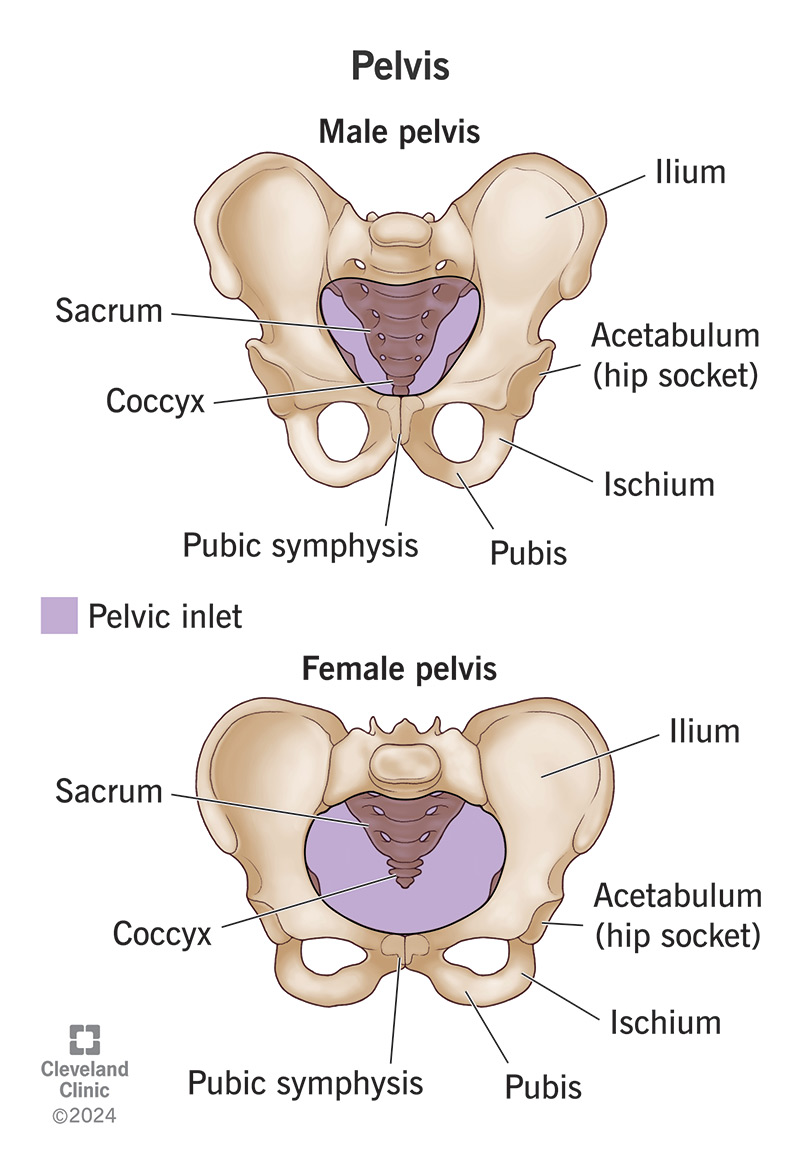Your pelvis is the bony structure inside your hips, buttocks and pubic region. It’s the seat that holds up your upper body when you sit, stand or walk. The hole in the middle of your pelvis serves as the birth canal during vaginal delivery. Your pelvic anatomy can shift to accommodate childbirth.
Advertisement
Cleveland Clinic is a non-profit academic medical center. Advertising on our site helps support our mission. We do not endorse non-Cleveland Clinic products or services. Policy

Your pelvis is the seat of your axial skeleton (the central core of your skeletal system). It holds up your trunk and connects it with your legs below. Your pelvic bones form a sort of basin at the base of your spine, with an opening in the middle. These are the bones of your hips, buttocks and pubic area.
Advertisement
Cleveland Clinic is a non-profit academic medical center. Advertising on our site helps support our mission. We do not endorse non-Cleveland Clinic products or services. Policy
Sometimes, healthcare providers use “pelvis” to refer to the whole pelvic region of your body (between your abdomen and thighs). Pelvic pain usually involves the organs inside this space. These include your urinary system, reproductive system, rectum and anus. A pelvic exam generally examines these organs.
Your pelvic bones support the weight of your upper body, together with the muscles of your pelvic floor. Your pelvic cavity, the space between your pelvis and abdomen, holds your urinary and reproductive organs. The opening in your pelvis serves as the birth canal in females.
Five separate bones combine to form your bony pelvis. Your pelvic bones include your:
Advertisement
A joint is where any two bones meet. In your pelvis, several small joints between the vertebrae of your pelvic spine help your spine move. There are also several joints that connect the bones of your pelvic girdle to each other and the rest of your body. Cartilage and ligaments hold them together.
Joints in your pelvic spine include your:
Joints in your pelvic girdle include your:
Historically, healthcare providers classified pelvic shapes into four basic types. Today, providers recognize that pelvic shapes exist on a spectrum rather than falling into only four types. But the types still exist as a reference point. They mainly differ by the shape of the pelvic opening at the top (inlet).
No matter your sex, your pelvis will continue to grow and change through puberty. By adulthood, your pelvic anatomy will differ in certain ways by the reproductive organs you have. These differences have evolved together with our different reproductive systems.
If you have a female reproductive system, your pelvis anatomy is optimized for childbirth. This means:
On the other hand, if you have a male reproductive system, your pelvis doesn’t have to accommodate childbirth. So, your pelvis anatomy is optimized for walking and running on two feet instead. This means:
The bones and joints of your pelvis are subject to the same injuries as others in your body, including fractures, dislocations and repetitive strain injuries. You can get arthritis in your pelvic joints. Pregnancy and childbirth can also cause temporary pelvic joint pain. Some specific pelvic conditions include:
Advertisement
Conditions related to connective tissues within your pelvis include:
Exams of your pelvis include:
Your pelvis is a core structure of your musculoskeletal system. It balances and carries the weight of your upper body when you sit, stand or walk. For some of us, it also accommodates childbirth. During pregnancy, your pelvic joints relax and prepare to expand for childbirth, which can cause discomfort.
You might never consider your pelvis until pregnancy or another condition brings it to your attention. If you're pregnant, you may even become concerned with the shapes of your pelvis and how it might affect your delivery. Keep in mind that pelvic shapes vary widely — and all types deliver healthy babies.
Advertisement
Last reviewed on 09/23/2024.
Learn more about the Health Library and our editorial process.